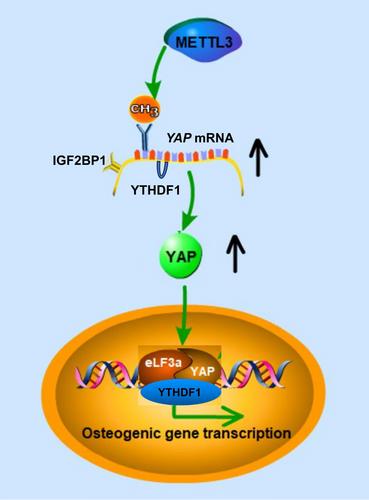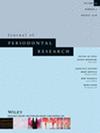METTL3 promotes the osteogenic differentiation of human periodontal ligament cells by increasing YAP activity via IGF2BP1 and YTHDF1-mediated m6A modification
Abstract
Aims
N6-Methyladenosine (m6A) has been confirmed to play a dynamic role in osteoporosis and bone metabolism. However, whether m6A is involved in the osteogenic differentiation of human periodontal ligament cells (hPDLCs) remains unclear. The present study aimed to verify the role of methyltransferase-like 3 (METTL3)-mediated m6A modification in the osteogenic differentiation of hPDLCs.
Methods
The METTL3, Runx2, Osx, and YAP mRNA expression was determined by qPCR. METTL3, RUNX2, OSX, YTHDF1, YAP, IGF2BP1, and eIF3a protein expression was measured by Western blotting and immunofluorescence assays. The levels of m6A modification were evaluated by methylated RNA immunoprecipitation (MeRIP) and dot blot analyses. MeRIP-seq and RNA-seq were used to screen potential candidate genes. Nucleic acid and protein interactions were detected by immunoprecipitation. Alizarin red staining was used to evaluate the osteogenic differentiation of hPDLCs. Gene transcription and promoter activities were assessed by luciferase reporter assays (n ≥ 3).
Results
The expression of METTL3 and m6A modifications increased synchronously with the osteogenic differentiation of hPDLCs (p = .0016). YAP was a candidate gene identified by MeRIP-seq and RNA-seq, and its mRNA and protein expression levels were simultaneously increased. METTL3 increased the m6A methylated IGF2BP1-mediated stability of YAP mRNA (p = .0037), which in turn promoted osteogenic differentiation (p = .0147). Furthermore, METTL3 increased the translation efficiency of YAP by recruiting YTHDF1 and eIF3a to the translation initiation complex (p = .0154), thereby promoting the osteogenic differentiation of hPDLCs (p = .0012).
Conclusion
Our study revealed that METTL3-initiated m6A mRNA methylation promotes osteogenic differentiation of hPDLCs by increasing IGF2BP1-mediated YAP mRNA stability and recruiting YTHDF1 and eIF3a to the translation initiation complex to increase YAP mRNA translation. Our findings reveal the mechanism of METTL3-mediated m6A modification during hPDLC osteogenesis, providing a potential therapeutic target for periodontitis and alveolar bone defects.


 求助内容:
求助内容: 应助结果提醒方式:
应助结果提醒方式:


